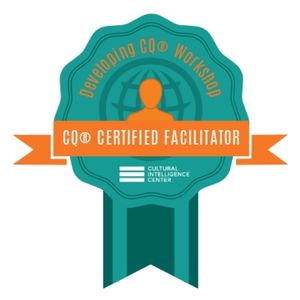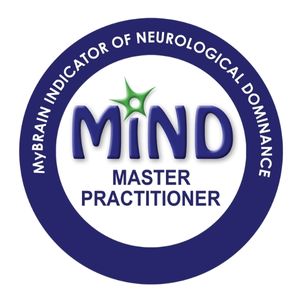Listen here:
Watch here:
Today we deep dive into a topic which I’m frequently asked about- clarity in speaking.
Many global professionals talk to me about how they want to sound more clear, concise and professional in the way they speak, to help them build their influence and impact, and so people listen and act.
Clarity is one of the key foundations of my 4 pillars of Global Leader Communication, so in this episode we will explore why it is important, why it’s challenging for you currently and how to develop your clarity in your speaking.
What you will learn in this episode:
- What characterises people who speak with clarity
- The benefits of speaking with clarity short term
- How speaking clearly can build your personal brand and professional reputation
- Why it is a challenge to speak with clarity
- Key steps to develop your speaking clarity
- Introduction to my 5Ps model of speaking clearly
Find out more:
TRANSCRIPT:
Hello, and a very warm welcome to Cultural Communication Confidence, with me Victoria Rennoldson, and a very warm welcome to Episode 75, where we’re talking about: Mastering your Clarity – Elevating your Influence.
Now, it’s great to be back for a solo episode, and I have been doing interviews in the last few episodes, I had Michael Quigley on the podcast, and Michelle Bradley most recently, talking about cultivating connection and leadership with Michael, and cultural EQ and global agility with Michelle Bradley, and those were brilliant conversations, so if you haven’t had the chance to listen to those, please feel free to go back and have a listen.
Today though, I’m really excited to be back for a solo episode, and we’re talking all about this topic of mastering clarity. This is one of the pillars of my four pillars of global leader communication, so there is: confidence, connection, there is challenging conversations, and there is clarity. And I know this is a topic that is resonant with you, I know that I get many questions about how to sound clear and concise, how to come across more professionally in the way that you express yourself, and that comes from questions from people who listen to this podcast, but also from the people that I meet in my many talks and webinars, and of course, from my clients themselves, so that’s why we’re focusing on this topic today.
So to start off with, I want you to really think about a global leader that you know, that speaks with clarity. Maybe somebody that you admire in your own organisation today, who you know speaks with that clarity already, or maybe it’s somebody that you used to work with in the past, in your career, and you really saw them demonstrating this clarity in the way that they spoke. Or maybe even, it is somebody who is famous, a global leader from the world of politics or Tech, or from one of the major companies that you see who speaks well when they’re in front of different audiences, different sizes of audiences, but they always land their message well.
Once you have that person, or maybe a couple of people in mind, I want you to reflect – what makes them clear in their speech? What are they doing? How are they changing the way that they speak? What characterises the way that they are clear? This is a great exercise, and can help you analyse others. See what they do, through what they say and how they say it, to get across the clarity in the way they talk. And this can help build up ideas for yourself around how you can develop it. But of course, I will be sharing some ideas and tips for you here today as well.
But let’s start off with why it’s important to you. Well, I know that when I talk to you, when I talk to people on my webinars, in my talks, when I talk to people who respond and give me feedback to this podcast, some of the elements that are so important with clarity include the way that you can inspire and motivate others. It’s about being able to share your ideas and thoughts in a compelling way, so that people remember them. That your ideas and thoughts literally become sticky – people literally stick to them. Maybe it’s about influencing people to action, maybe that’s a key part of this, and of course if we break that down, that includes being listened to, so people pay attention to you, they understand well what they need to do, and they do that action, they respond to you and they take the next step. And of course, the way that we are speaking clearly, the way that we influence, also has a great impact in how we are perceived within the business.
It builds our personal brand, and it also enhances our professional reputation, which has great implications for our Career Development within an organisation or our ongoing career dreams and goals.So that’s why it’s important, and as I was sharing these, maybe you were reflecting for yourself personally in your stage of your career or business development, which one was the most important to you. So that’s why it’s important. But then, I think the other question we have to ask ourselves is, well, why is it not happening for you right now?
Well, I think there are many reasons why it could not be happening for you – it could be connected to your beliefs about your confidence to speak clearly and concisely, maybe you have a sense that you speak too much, that when you are maybe nervous or under pressure or under stress, in certain situations, it could be the context or it could be with a certain group of people, like a senior leadership team, or the board, you feel that pressure and somehow the clarity gets lost.
Maybe you end up speaking too much, maybe it’s the opposite, you lose your words and you feel like you’re trying to explain things in many different ways and repeating yourself. It could be that you look at other people and see that they do it so well, and that intimidates you. You compare yourself to the other people, and don’t feel like you’re able to do it in exactly the same way. So there could be many reasons, and it could come down to the beliefs itself, your beliefs about your ability to do this, and your ability to speak up and share in the moment. But whatever is holding you back, I want to reassure you it is absolutely possible to move forward, to take the step forward, and make a difference.
So here comes the really important part of this: how do you do this? How do you speak with clarity? How can you improve it? Well, the first step is that I want you to bring your intention and attention to how you’re speaking. I understand that in an incredibly busy world, where many of you are back to back with meetings, rushing from one thing to another, it can be easy to turn up and be in the moment communicating, but for you to develop this skill around clarity you need to put some focus on it.
You need to think about how you approach it, and plan, before you get into the meeting. That might be a very short exercise, only a minute, or maximum 5 minutes considering, but I promise you, it will make the difference to how you speak, how you come across. So this is the first point.
The second point is that sometimes when I speak to people, the expectation is that you have to be an eloquent and articulate speaker. Now, I think that’s a worthy goal to go for, however, that can put a lot of extra pressure on you, if that is not where you are at today, so in my view, it is much better to speak simply, keep things simple, express things in simple ways, and make sure that everybody understands. I think this is much better, rather than getting caught up with trying to express things in complicated ways, which might not land with people. I think this is especially important in global teams, where there are many different cultures represented, perhaps multilingual people are represented as well, and maybe many people do not have English as their first language, so it is important for inclusivity, that the communication you have is simple, that everybody understands what you’re trying to say.
But with the planning piece, what are you actually planning? Well, in my world, with my clients, I like to use my model, which is the five P’s of clarity, and I use this to help them think about how to approach different types of communication, from meetings to presentations.
Now, in today’s podcast, I would love to do a deep dive on one of those P’s, and that P is People. People are so critical when we’re thinking about our communication and planning, how do we want to come across with clarity. So think about a meeting that you have coming up, or a presentation, something where you’re interacting with more than one person. That could be a small group, or it could be you standing up in front of a large audience, and sharing your presentation or speaking in public.
Whatever the context is, make sure you have that in mind. Got it? Great. Now, I want you to think about that group and ask yourself: how well do you know them? Do you understand them? Are they people that you work with regularly, if not every day? Or is this a group that is unknown to you, you’ve actually never met them before, and you don’t know much about them? So this is the first step, you need to know who it is, who’s in the room, whether that’s a virtual room or physically face to face. You need to know them, you need to understand: what’s their motivation to be there? Do they want to be there even in the room? How engaged are they on the topic that you’re talking about? What are they bringing into the room with their own energy, how do they feel about this? And what questions do they have? What kind of challenges are they likely to bring up, if there is a question section to what you’re doing? This is so important, know who it is that you’re talking to.
Then, you can really think about what you want them to know, feel, and do. Now, for many of you, you probably have been thinking about what you want them to know, the facts, the insights, the knowledge that you’re sharing, whether that’s an update meeting or a presentation. You may also be thinking about the action, the doing part – so what you want them to do next, after that particular interaction. But the feeling part is sometimes the bit that gets missed. So, how do you want them to feel at the end of the meeting? Do you want them to feel inspired and motivated by what you’re saying? Or maybe you want them to be facing a reality check and realising they need to change? Maybe it’s about them feeling excited about what’s coming next. Really focus on this idea – how do you want them to feel? – because that will change your approach in how you are talking and how clear you can be. So that is a ‘know, feel and do’. And another element that I want you to think about is what they need to know vs want to know.
Sometimes we come into a room with sharing information, sharing updates, that are expected, it’s what the others want to hear. But sometimes, particularly if you are in a more senior role, and more leadership role, you need to think about what do they ‘need’ to know, what are those tough messages that need to land? Again, if you can identify this, then you can get very clear about how you want to say it.
The final part of People for me is your cultural intelligence. Now, what that means is, cultural intelligence is an approach, which is about thinking about other people in a multicultural context. How do you build successfully your relationships, and interact and operate effectively? This means that you need to recognise there may be nuances and differences in how people behave, communicate, and expect communication from you.
When I think about some of the implications of that, that might mean you need to change your style of communication, such as whether you need to become more direct in your communication style, or more indirect. You might need to think about how expressive you’re being with your body language, your hand gestures, your facial expressions. You might even need to think about how the group are going to make a decision, if that’s what you’re looking for – is this about collaborating, discussing as a group, and coming to a view in a collectivist way, or is it about making sure there’s a key stakeholder who is in the room, who is the decision maker at the end of the day? These are just a few examples, but you need to use your cultural intelligence to make sure that you’re successful and clear in the way that you communicate.
So there we go, I hope that has been helpful for you today. So I want you to reflect on the questions: which parts of your speaking clarity are you struggling with today? What elements of the ideas and tips that I shared here are going to help you most? How can you implement the ideas around people that I shared here today, to make you more successful in being clear in the way you speak? I would love to know, so please feel free to message me on LinkedIn and tell me, how do you find implementing this now?
As I mentioned, ‘clarity’ is one pillar of the four pillars of my Global Leader Communication. The others are Confidence, Connection, and Challenging conversations, and we will be talking about each of these in turn. However, if you know that clarity is something that you struggle with, it’s the area that you need to work on most, then I would invite you to book a communication assessment with me, and I will be able to analyse and understand where you’re at today, tell you more about and in more detail, the five P’s model, to help you with your clarity and help you apply that to your own situation. That’s a complimentary communication assessment, so if you’d like to try that out, then please feel free to book that with me, you can find that at www.culturecuppa.com/communication-assessment and you can find the link to that in the show notes.
Thank you so much for joining me here today, it’s been an absolute pleasure to be back for this solo episode, talking all about mastering clarity – elevating your influence, and I very much look forward to seeing you next time, on Cultural Communication Confidence.




